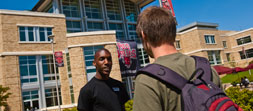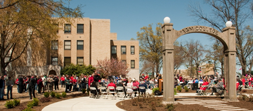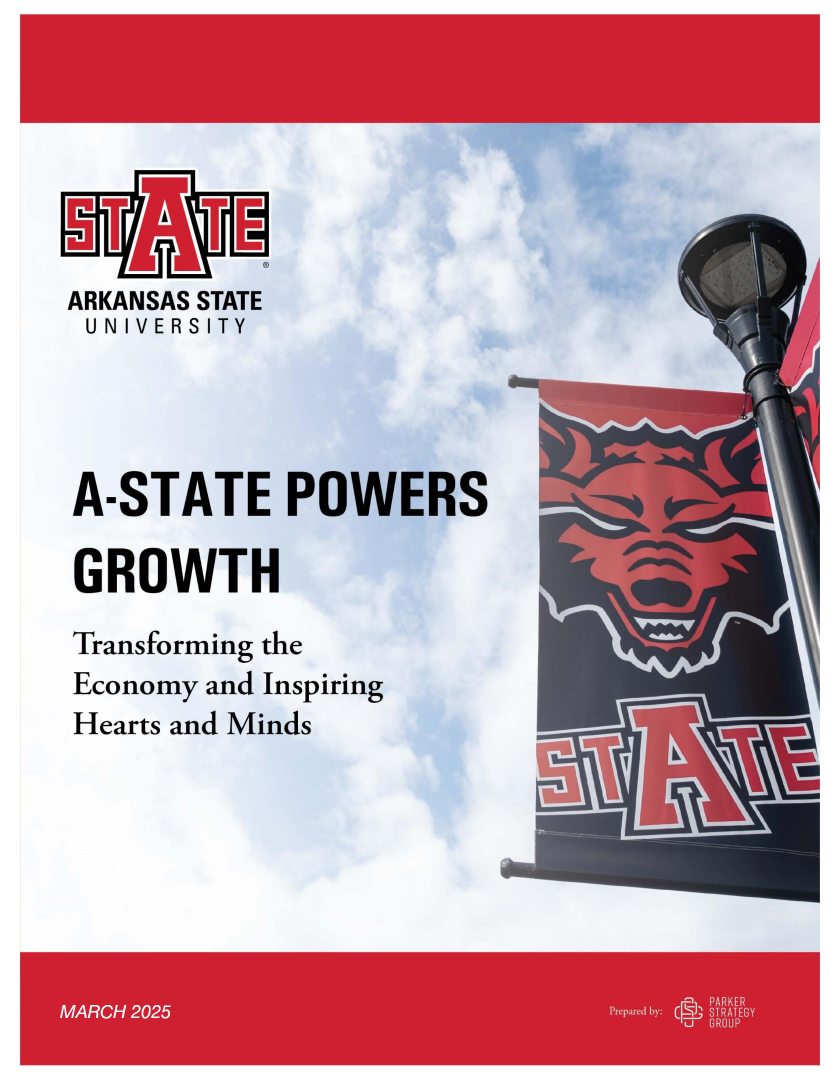A-State's Economic Impact Measured at $2.5 Billion, with 16,332 Jobs Created, Sustained
JONESBORO – When Jonesboro leaders were making their case in 1909 that the First District State Agriculture School, just authorized by the Arkansas General Assembly, should be located here, they emphasized the economic impact the institution could have on a wide region.
More than a century later, the evidence of their wise prediction gets stronger with every analysis. The most recent study shows Arkansas State University creates an annual economic impact at a level of which those early community advocates could only have dreamt.
Recently completed by Parker Strategy Group, the study is titled “A-State Powers Growth: Transforming the Economy and Inspiring Hearts and Minds.”
Their analysis concluded Arkansas State University’s economic impact reached $2.5 billion in the fiscal 2022-23 year, including $480 million generated by A-State Jonesboro campus, student spending, and visitor spending and $2 billion generated by A-State alumni living and working throughout Arkansas.
While these numbers are huge, people can perhaps more readily grasp the study’s conclusion regarding the number of jobs supported. Arkansas State’s impact supports and sustains an estimated 16,332 jobs throughout Arkansas, including 4,752 via direct employment on campus, student spending, and visitor spending impacts and 11,580 via alumni impact in the state of Arkansas.
“Our commitment to excellence is not just measured in diplomas awarded, but in the far-reaching impact of our institution,” Chancellor Todd Shields said in his preface to the report. “Each year, A-State generates significant economic activity, creating jobs, supporting local businesses, and attracting investments that energize our region.”
For every dollar invested by the State of Arkansas in A-State, $7.10 is returned to the state as a result of A-State’s combined economic impact.
Also, for each dollar invested by the State of Arkansas, $2.52 is returned to the state through taxes generated by university operations, student and visitor spending.
Through its local spending and the jobs supported or sustained, A-State generated $152.5 million in local and state taxes.
“As one of the largest employers in the area, we contribute directly to the financial wellbeing of families and indirectly to the growth of industries that depend on an educated, skilled workforce,” Shields also said.
Subsequent to its opening in fall 2016, the New York Institute of Technology College of Osteopathic Medicine on the A-State campus has become a thriving economic partner. NYITCOM generates an additional $44.6 million in economic impact, supporting 263 jobs and conducting operations that result in $2.2 million in additional state and local taxes.
Also measured in the report, which is now available online, was the amount A-State people give back, including the value of volunteer hours and charitable giving. Students, faculty and staff provided more than 176,000 volunteer hours, valued at $5.3 million, and charitable giving from alumni and others totaled $1.6 million, in the year studied.
Some types of economic impact are direct, such as spending by resident students and by visitors, especially those attending sports contest and other campus events. Some impacts are considered indirect, such as the increased demand for supplies and services from industry sectors that serve the students, faculty, staff and alumni, along with the institution itself. A third category, induced impact, estimates the effect of increased household income and resulting spending among students, employees, alumni, suppliers and supplier employees.
Economic impact studies demonstrate how universities, like Arkansas State, influence their communities. They are widely utilized across the country to quantify impacts and to demonstrate their return on investment.






